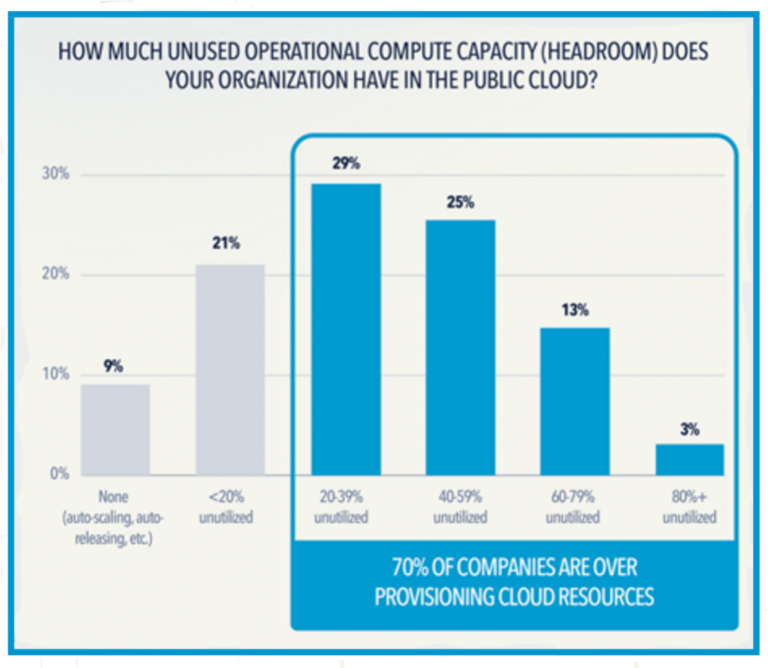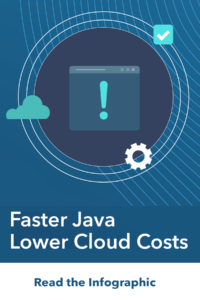
The cloud landscape is rapidly transforming, with organizations continuing their advance to the cloud for scalability, flexibility, productivity, and agility – yet cost, cloud waste, and security remain two of the leading challenges.
Overprovisioning Cloud Resources Leads to Cloud Waste
In a telltale sign of overprovisioning cloud resources, Azul’s State of Java Survey and Report 2023 exposes that nearly 70% of companies pay for cloud capacity that they are not using.
The report also details that 90% of respondents are using Java in a cloud environment: public (48%), private (47%) or hybrid (40%).
IDC Weighs In – Your Choice of Java Runtimes Matters
As would be expected in uncertain economic times, the majority of companies (95%) have taken steps to lower their cloud costs in the past year. To reduce public cloud costs, 46% of businesses are taking advantage of a high-performance Java platform to use cloud resources more efficiently.
IDC echoes the findings: “Enterprises often don’t use all the cloud computing they pay for due to the over-provisioning of virtual servers required to accommodate spikes in demand from ultra high-performing applications and those where end-user experience is paramount. But this creates challenges for IT teams facing a difficult budget environment that requires more efficient use of resources,” said Jevin Jensen, research vice president, Intelligent CloudOps, IDC. “Running Java applications and infrastructure with a faster and more efficient JVM can provide superior performance, consistency, and the capacity to address these challenges, gaining tangible business results today.”
Azul Platform Prime – a Java Runtime to Help Control Cloud Costs
The formula is simple: faster Java = lower cloud costs.
By simply swapping out your language runtime (the Java Virtual Machine (JVM)) with a functionally equivalent optimized runtime can make a big difference. Azul Platform Prime is application aware and learns your application’s patterns and paths and translates and adapts that to optimal execution for the underlying operating system and hardware platform.
An added benefit of an optimized runtime – in a pay-as-you go cloud world – is the immediate results. Optimized runtimes lower the burden on the underlying operating system and hardware from your application – allowing you to crank up the utilization of that hardware to do more work with the same resources or shut down/use fewer instances. In the latter case your cloud bill can see immediate savings.
Choosing an optimized Java runtime will run your code faster and use less compute, and that lowers your cloud bill.






